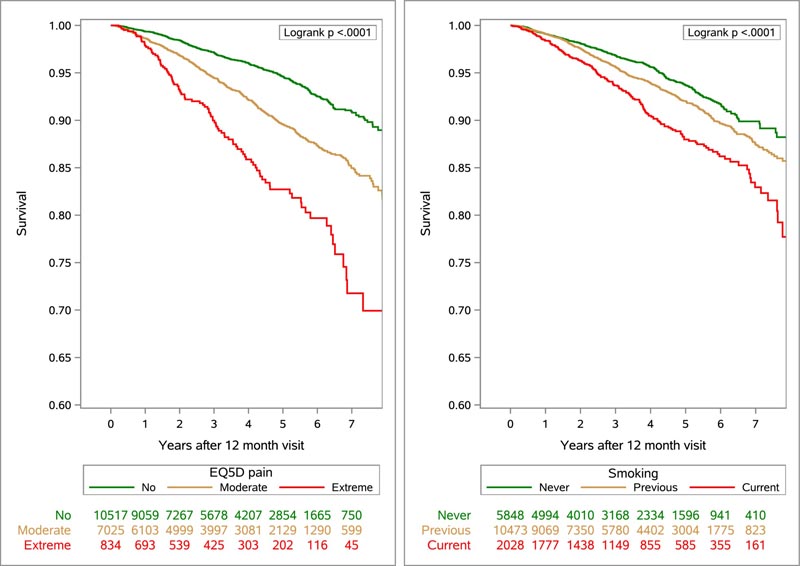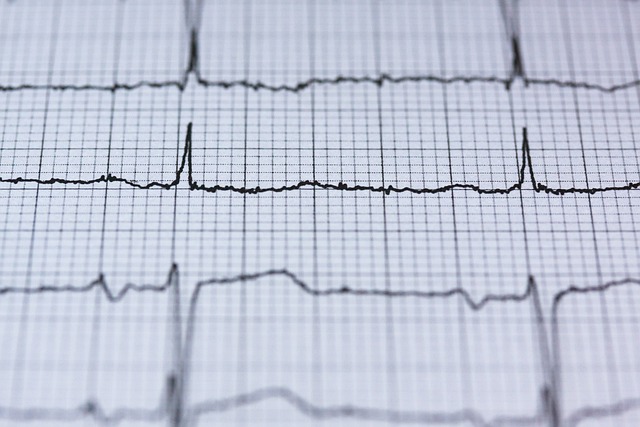Pain a year after a heart attack is common and is linked to a higher chance of death within the next 8 years, finds a new study published in the Journal of the American Heart Association .
Research Highlights:
|
People who have had a heart attack often report pain about a year later. Moderate or extreme pain after a heart attack, most commonly pain due to other health conditions , may help predict the likelihood of death over the next 8.5 years, according to new research published in the Journal of the American Heart Association , a peer-reviewed open access journal of the American Heart Association .
In this study, participants who reported having extreme pain after a heart attack were more than twice as likely to die during the study period compared to those who reported no pain.
“Pain causes significant loss of function and can lead to disability, all of which contribute to major global public health problems. Research indicates that pain is linked to an increased risk of cardiovascular disease and death in general; However, the impact of pain on death after a heart attack has not yet been examined in large studies,” said study author Linda Vixner, P.T., Ph.D., associate professor of medical sciences in the School of Medicine. Dalarna Health and Wellbeing. Falun University, Sweden.
Analysis of health data from more than 18,300 adults who suffered a heart attack, from the Swedish quality registry called SWEDEHEART, found:
- Nearly 45% of participants reported moderate or extreme pain one year after their heart attack.
- Those with moderate pain were 35% more likely to die from any cause than those without pain over the 8.5-year study period.
- Those who reported extreme pain were more than twice as likely to die during the 8.5 study period, compared to heart attack survivors who had no pain.
- 65% of participants who experienced pain at the two-month follow-up also experienced pain at the 12-month follow-up, indicating long-term, persistent pain.

Figure 1. Kaplan‐Meier estimates of all‐cause mortality 1 year after myocardial infarction (MI) and number of subjects at risk by pain categories 1 year after MI (left) and by smoking categories 1 year after the IM (right). EQ‐5D indicates the EuroQol‐5 dimension instrument.
“After a heart attack, it is important to evaluate and recognize pain as a major risk factor for future mortality. Additionally, severe pain can be a potential obstacle to rehabilitation and participation in important heart-protective activities, such as regular exercise; Reduction or lack of physical activity, in turn, increases the risk,” Vixner said. “For patients with pain, it is particularly important to reduce other risk factors, such as smoking, high blood pressure and high cholesterol levels.”
Study details:
The adults in the study were under 75 years old (median age was 62, 24.5% women) and suffered heart attacks between 2004 and 2013.
Pain data from a two-month follow-up visit and a questionnaire from participants completed one year after their heart attack were evaluated to assess whether they had no, moderate, or extreme pain. The pain they reported was more likely to be due to other health conditions.
The survey of participants did not specifically ask about the duration of pain they experienced, although most reported having pain two months after the heart attack and a year later, indicating that the pain was long-lasting. The study also only included people living in Sweden, which may not apply to people living in other countries or communities.
According to the American Heart Association, a heart attack occurs every 40 seconds in the United States. Data from 2005 to 2014 estimated that the annual incidence of heart attacks in the United States was 605,000 new heart attacks and 200,000 recurrent heart attacks. The average age at first heart attack was 65.6 years for men and 72 years for women.
Conclusions
Pain 1 year after MI is highly prevalent, and its effect on mortality 1 year after MI was found to be more pronounced than smoking. Clinicians treating patients after MI should recognize the need to take experienced pain into account when making prognostic or treatment decisions.
What are the clinical implications?
- The findings add new knowledge for healthcare personnel involved in cardiac rehabilitation programs as they demonstrate that pain is an important factor to explore and consider for each individual after a myocardial infarction.
- Pain should be evaluated during follow-up after myocardial infarction and recognized as an important risk factor.
- Experiences of extreme pain should be highlighted as a potential barrier to rehabilitation and as an obstacle to engaging in important cardioprotective activities.
The study was funded by Svenska Försäkringsföreningen, Dalarna University and the Dalarna Region.
















